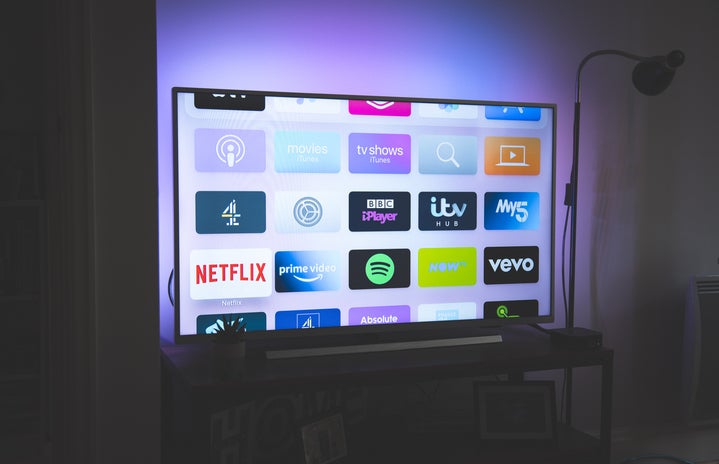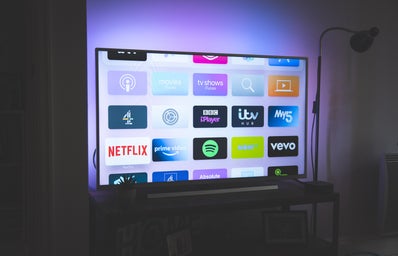Since the creation of television, multiple types of entertainment have reached the public eye: soap operas, reality shows and cartoons, for example, have become fan favorites over the decades. Each type of media connects with audiences in a different manner, touching people’s heart with acting, special effects or a characteristic cartoon-ish style, which meant that different shows started to cater and be associated with certain groups, like how romance shows are usually associated with teenage girls or how cartoons are now associated with kids, even if more people watch those contents. -For instance, adults may also watch (and enjoy) Bridgerton although it is a romantic show, a phenomenon that also happens with cartoons, especially with parents.
That being said, some people might question if there even is any entertainment value attached to cartoons or if it can only entertain kids because of its bright colors and cute characters, and, well, it seems like the entertainment is actually there! In this article, we managed to interview Kiko Mistrorigo and Célia Catunda, the creators of the beloved Brazilian 2010’s kid cartoon Fishtronaut (Peixonauta in Brazil) and Earth to Luna! (Show da Luna in Brazil), and they taught us how impactful cartoons can be for adults, especially (but not exclusively) parents!
MORE ABOUT THE INTERVIEWEES AND THE SHOWS
Before talking more about cartoons, it is interesting to properly introduce Kiko Mistrorigo and Célia Catunda in this article! They are both co-creators of the animated series previously mentioned and created Pinguim Content, a Brazilian studio focused towards creating shows and cartoons. Despite being from Brazil, they air TV programs for more than 120 countries and have been creating them for over 30 years!
According to them, Catunda is responsible for most art processes in the company and Mistrorigo tends to stick to concept creation, so both have parts in the final product. They also aim to create content that, despite not being boring, has to be educational, because kids absorb information everywhere, so spreading knowledge through fun cartoons and shows makes them more educated while also enjoying their free time.
The shows Fishtronaut and Earth to Luna! are both geared towards children and focus on teaching a different aspect of science while also being entertaining, like previously mentioned, as the same time gives children opportunity to relate to the characters. Both of them are very prominent on Brazilian television and have become a part of a lot of Latin America kids’ childhoods, though they have both been distributed internationally and translated to multiple languages! Earth to Luna! has also become a part of Brazilian schools’ didactic materials in order to aid children with learning science.
In the interview, we learned a bit more about what led them to writing those shows, and their reasons are truly honorable. Celia Catunda told us that she would always watch shows where siblings are shown that disliking the other was fun, that name calling was ok and that only boys could be smart, an affirmation that Kiko Mistrorigo also pointed out was negative and wanted to subvert, so Pinguim Content aimed to make kids learn positive messages through their entertainment. They wanted to be able to create role models for kids at home, with smart girls and boys (like Marina, Luna and Jupiter) that are caring and fun, which is something that kids media does truly benefit from seeing! Mistrorigo also affirmed that a big part of Pinguim Content is to aim for that “content sharing” experience, with kids watching the show with their parents and siblings and eventually taking the lessons they learned to friends, grandparents, relatives etc.
Mistrorigo also mentioned how he wanted to give his shows the feeling that children have when they experience the world, that childlike wonder to seeing new things and experiences, and his idea got translated beautifully into their work, with stunning backgrounds and music, flawless animation and such captivating stories, even for older people!
BACK TO CARTOONS! HOW ARE THEY NOT ONLY FOR KIDS IF their media is OFTEN ANIMATED?
For starters, it is important to understand that cartoons are just a form of art, so they’re not inherently made for children– in her interview, Catunda said: “[animation] Is a technique. But it is, usually, considered a genre on its own, an “animation genre”. The point is that it isn’t– you can make animated documentaries (there are some great ones out there), precisely because it is good at dealing with hard topics”. Her perspective shows how people tend to group all animation into a single thing and assume that the big group is for children because a good portion of children’s content is animated, and that’s just generalizing!
Catunda goes on to mention some animated documentaries, such as Ryan, that depicts an animator’s life with schizophrenia, and Breadwinner, that shows the reality of a young girl and her family living through the Taliban occupation of Afghanistan in 2001. They are both great movies to watch and show the power of animation, but if that still doesn’t prove that animation is not kids’ only, take a look at adult animation! You can’t argue that Bojack Horseman and South Park are made for children, despite being animated, and that shows how it is a versatile medium and it has potential for all ages to enjoy! But what about children’s shows? Can adults enjoy even THOSE cartoons?
WHAT DO THE SPECIALISTS SAY?
According to Mistrorigo and Catunda, yes! Even though it may surprise some people, a lot of adults have reported that they enjoyed watching Fishtronaut and Earth to Luna! with their kids! The phenomenon of adults watching cartoons may happen for an amalgamation of reasons, like watching kids shows for nostalgia, a movement that can be seen with Avatar: The Last Airbender and Gravity Falls, or just simply enjoying the story and the plot surrounding it, like it often happens with adults who watch Bluey despite not having kids. But it does seem that, sadly, most adults only get in contact with animations due to their kids, siblings or grandchildren, and once their younger counterparts feel like they “grew out of it”, the older group stops watching it as well.
For that reason, Pinguim Content tries to get cartoons and animations, even educational ones, to reach adults as well in a not-so-straightforward way in an attempt to get that form of art to a bigger range of people: according to Mistrorigo, an important goal of the studio is to aim for that “content sharing” experience, with kids watching the show with their parents and siblings and eventually taking the lessons they learned to friends, grandparents, relatives etc, but can that truly be effectful?
When asked whether or not adults with no kids seemed to engage with their content, both answers were no– while Mistrorigo gave a more straightforward answer, Catunda still showed us that, to this day, the group of adults that enjoy their cartoons are mostly made up of parents. Mistrorigo told me that when parents notice their kids positively enjoying their content, that’s when the eldest family members start to watch and eventually consume those shows with the youngests, especially because they feel responsible for what content kids engage with and knowing that it is safe and educational makes adults appreciate the shows even more.
Catunda, on the other hand, said that she has already seen people on X, formerly Twitter, with usernames such as “Fishtronaut”, but that those people don’t seem to actively still be in contact with the media, rather, they changed their name to match the character’s as a homage to the show and to their childhood, which means that they are the now grown-up adults that once enjoyed the show as kids, but that the shows made by Pinguim Content doesn’t seem to attract a new adult audience (that have no kids) to it.
TAKING MORE KID SHOWS INTO CONSIDERATION- CAN ADULTS ENJOY THEM?
It is important to note that just because Pinguim Content has one experience, it doesn’t mean that it is universal: certain kids cartoons attract both kids AND adults to its audiences! Still, it commonly happens with shows that are aimed at an older target audience rather than preschoolers, for example, made up of eight-and-over kids, but that also isn’t a rule of thumb.
For starters, let’s get some outliers out of the way: Sesame Street also has a considerable adult audience, especially because the show handles heavier topics very well, but that could be nostalgia-led, since it has been ongoing for decades and has reached several generations. However, Bluey is another show for preschoolers that has a MASSIVE teenager and adult audience that can’t be blamed on nostalgia, since the show is recent! During late 2022, the show started trending on TikTok and ever since it has gathered an older audience because of its cute and genuine interactions and beautifully emotional messages that are displayed on-screen, which shows that there is truly no “intended audience” that can stop adults from properly enjoying cartoons.
If we’re going for “older kids” cartoons that aim to reach kids elementary-school-aged and older, it is possible to separate them into their own little categories, such as humorous shows, non-linear shows, horror themed shows and story driven shows, with very good examples each that will be listed below.
For humorous shows, we can outline Sponge Bob and Phineas and Ferb that are very entertaining and have genuinely funny jokes (that may be only understood by adults), and that charm attracts people from all ages to watch them.
In the “non-linear” category, The Amazing World Of Gumball is a star! One aspect that attracts people, especially art-inclined adults, into watching the show is its very unique looks, mixing different art styles such as realism, cartoonish, sketch-like etc., which gives for an interesting look that is accompanied by an awesome script that can truly only be defined as “for all ages”, because no matter the age of the viewer they are guaranteed to enjoy it! Another example for this category is Jorel’s Brother, that also leans into humor but mostly shows a slice of life version of a Brazilian family with non-linear episodes but that are very enjoyable to all audiences, and is especially endearing to those from Brazil. A third, more well-known show that also has a nostalgic factor is Scooby Doo Mystery Incorporated, that is both funny and smart with solving its mysteries and is sure to entertain mostly everyone.
During the 2000s, there also was an increase of “horror leaning” cartoon shows that targeted kids from nine and up but that are absolutely amazing and certain to please adults, such as Courage, the Cowardly Dog, a show where a fearful dog has supernatural encounters with ghosts (and oh boy, were they scary) and Haunted Tales for Wicked Kids, another Brazilian cartoon such as Jorel’s Brother that also incorporates monsters and creatures into its plot; the show was visibly very dear to its creators which makes it even better, because everything is carefully planned out and lots of elements that are shown are somehow tied back to Brazilian culture as a homage to where the story started.
The last and most popular category that we described, the story driven, serialized cartoons, has the most recognizable shows, and for a reason! Their stories are intricate and while they usually start out light and bubbly, they can end with apocalypses, serious threats and scary demons. Obviously, these are the cartoons targeted towards ages ten and up and pre-teenagers, but the adult fanbase for these shows are HUGE. One of the shows is Adventure Time, which is set in a post-apocalyptic world where all humans (except Finn) died and is now populated by different creatures, and is quite character driven, with very flashed out people with their own traumas, desires, intentions that make them all so much more humane.
Another example is Gravity Falls, a show that recently had a resurgence due to a new book being published about the franchise, exploring the mysterious town of Gravity Falls and follows twins Dipper and Mabel Pines while they uncover the secrets behind their family and the town (and end up stumbling upon a demon). A third cartoon that is honorable is Steven Universe that definitely had its peak in 2017 in Tumblr but drew in so many adults for having a very well-constructed story with very few filler episodes and being progressive, as it was the first big cartoon to showcase a LGBTQIA+ couple on screen; it also has one of the best cartoon soundtracks of all time and most of its songs are still relevant! The last one to point out is The Owl House, which was canceled because the audience was too old, a show about a human girl that dreams of being a witch and ends up arriving at a demon realm, where demons and witches live; the show is also quite character driven and brings scary aspects, along with portraying an LGBTQIA+ couple, all factors that increased the adult audience for the show and made it so much better than many expected!
WHAT’S THE TAKEAWAY?
Just because a show has kids in mind while making it, it doesn’t mean that it is for kids only! So many cartoon shows get diminished because of its medium and art format that it really shows how adults should be more open minded when picking what they watch! Kid shows can encompass so many themes and topics that labeling them all under a “for children” genre really doesn’t do them justice, so I hope that you can give these shows a shot to see that they’re really worth it.
———————–———————–————–————–
The article below was edited by Fernanda de Andrade Silva.
Liked this type of content? Check out Her Campus Cásper Líbero for more!


